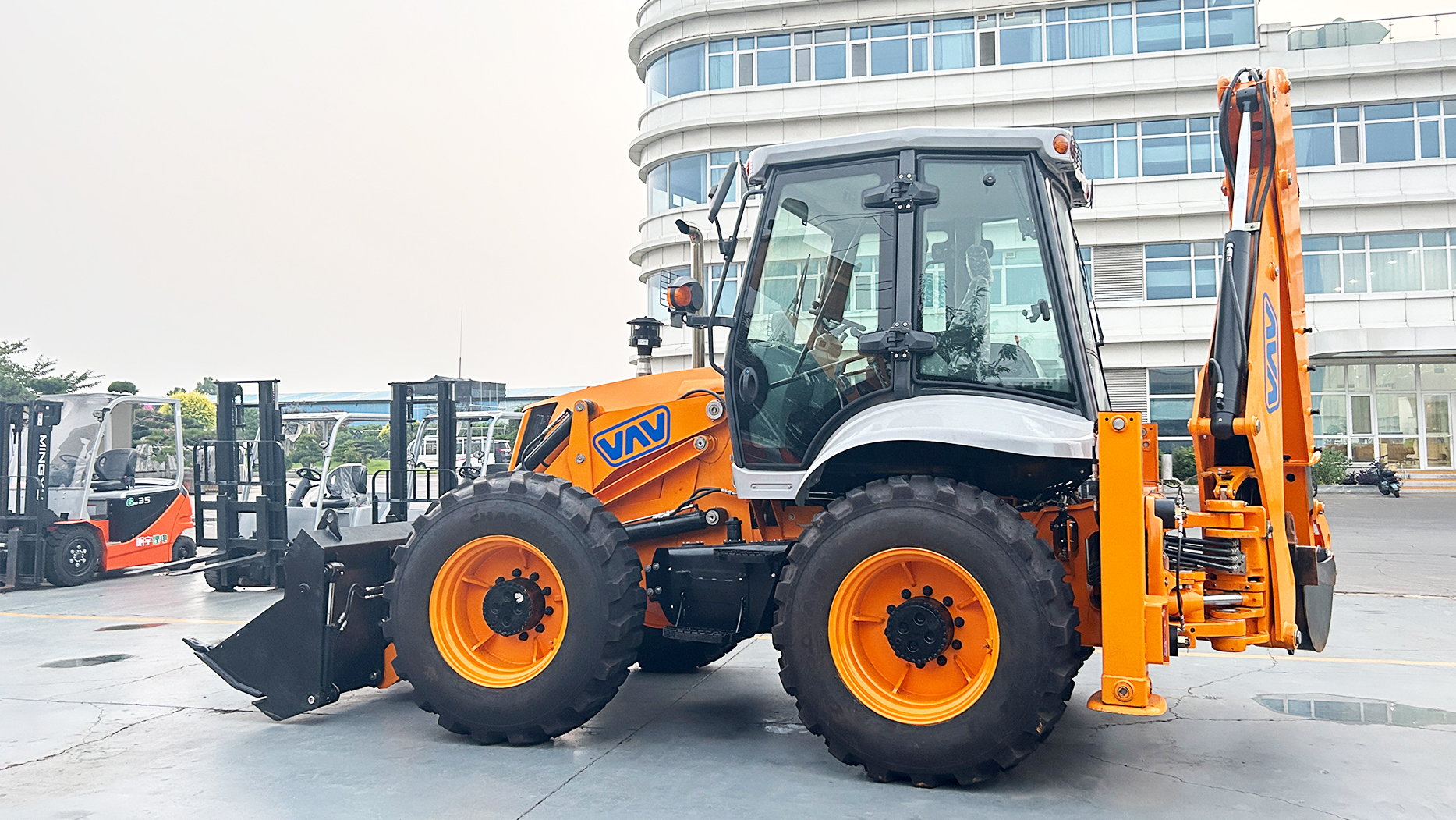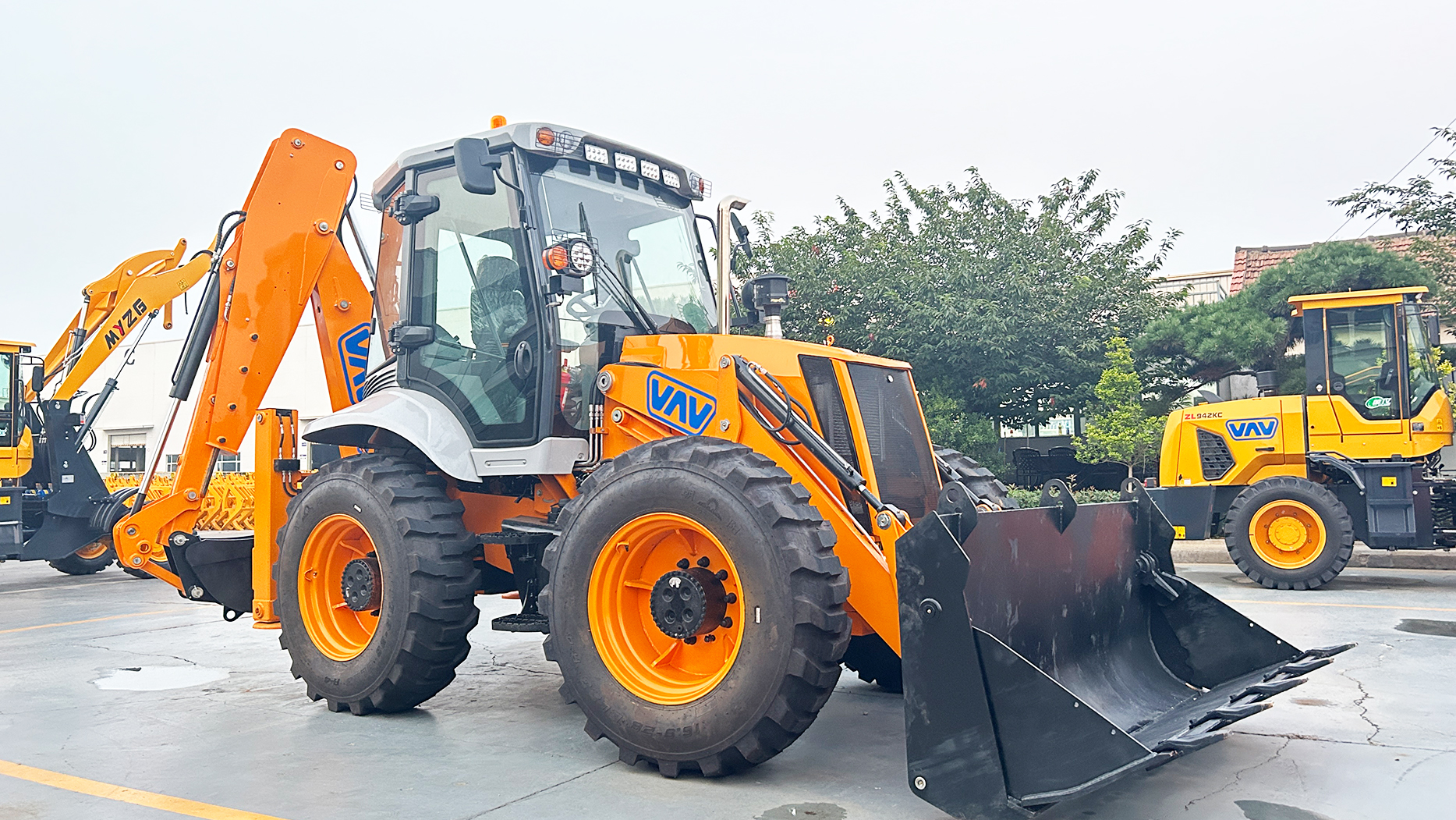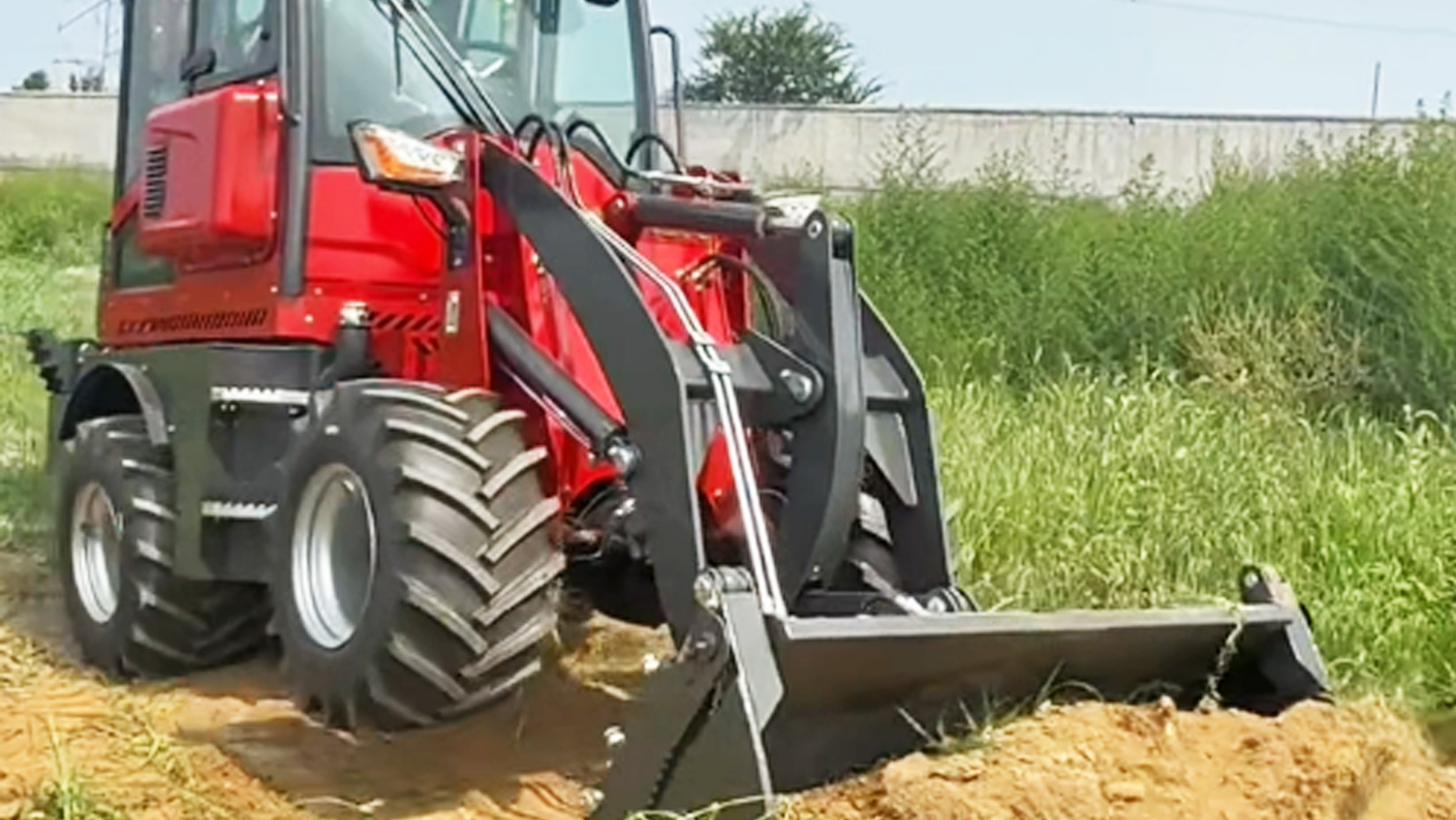While there isn't a single, universal "average" number, as digging depth varies significantly with the backhoe's size and model, we can explore the typical ranges and the factors that influence this crucial performance metric. This insight will help you determine if a standard backhoe loader is the right tool for your excavation needs.
Understanding Digging Depth Specifications
When manufacturers like MYZG or ZGLOADER list the digging depth for a backhoe loader, they typically provide several related measurements:
Standard Digging Depth: This is the most commonly cited figure, representing the maximum vertical depth the backhoe can dig at a specified reach (usually directly below the swing pivot).
Digging Depth (Loader Bucket Flat): Some specifications might include the depth the loader bucket can dig when flat, but the primary digging is done with the backhoe attachment.
Maximum Digging Depth (with extendable stick/dipper): Many modern backhoe loaders come with an optional extendable stick (often called a "dipper" or "extenda-hoe"). This hydraulic extension significantly increases the digging depth and reach, making the machine far more versatile. This figure will always be greater than the standard depth.
Reach at Ground Level: This indicates how far out the bucket can extend horizontally from the machine.
Average Digging Depth Ranges for Standard Backhoe Loaders
Backhoe loaders are generally categorized by their horsepower, operating weight, and, consequently, their digging depth. Here's a breakdown of typical ranges:
Compact/Smaller Backhoe Loaders (e.g., around 70-85 HP):
Standard Digging Depth: Approximately 12 to 14 feet (3.6 to 4.3 meters).
These models are ideal for utility trenching, residential landscaping, and smaller construction projects where maneuverability in confined spaces is important.
Often, they will be equipped with an extendable stick, pushing their maximum depth close to 16-17 feet (4.9 to 5.2 meters).
Standard/Mid-Sized Backhoe Loaders (e.g., around 90-110 HP):
Standard Digging Depth: Typically 14 to 16 feet (4.3 to 4.9 meters).
This is the most common size class for general construction, municipal work, and larger utility projects. They offer a good balance of power, digging depth, and transportability.
With an extendable stick, their maximum digging depth can reach 18 to 20 feet (5.5 to 6.1 meters). This capability makes them highly versatile for a wide range of trenching and excavation tasks.
Large/Heavy-Duty Backhoe Loaders (e.g., 110+ HP):
Standard Digging Depth: Can range from 16 to 18 feet (4.9 to 5.5 meters).
These machines are designed for more demanding applications, requiring greater digging force and capacity.
Equipped with an extendable stick, their maximum digging depth can push 20 to 22 feet (6.1 to 6.7 meters) or even slightly more for specialized models. This allows them to tackle deeper sewer lines, foundation excavations, and larger earthmoving projects.
Therefore, for a "standard" backhoe loader (mid-sized), you can generally expect a digging depth range of 14 to 16 feet, with the potential to extend to 18 to 20 feet with an extendable stick.

Factors Influencing Actual Digging Depth and Performance
While the advertised specifications provide a baseline, several real-world factors can influence a backhoe loader's effective digging depth and overall performance:
Soil Conditions:
Loose Soil (Sand, Loam): Easier to dig, allowing the backhoe to reach its maximum advertised depth more efficiently.
Compacted Soil (Clay, Hardpan): Requires more breakout force and can slow down digging, potentially limiting the practical achievable depth if the machine is underpowered for the task.
Rocky or Frozen Ground: Extremely challenging. May require specialized attachments (e.g., rock breakers) or limit the effective digging depth significantly, putting immense strain on the machine.
Bucket Size and Type:
Narrow Buckets (e.g., Trenching Buckets): Allow for deeper, more precise trenching with less resistance.
Wider Buckets: Excellent for bulk excavation but may reduce effective digging depth in very compact material due to increased resistance.
Specialized Buckets: Rock buckets are designed for extreme conditions but may have a different digging profile.
Operator Skill:
An experienced operator can maximize the backhoe loader's capabilities, achieving optimal digging depths and cycle times by understanding machine limits, hydraulic flow, and efficient digging techniques.
Proper positioning of the machine (leveling the stabilizers, proper swing radius) also contributes to effective depth.
Extendable Stick (Extenda-hoe):
This is the single most important optional feature for increasing digging depth. It significantly extends the reach and depth of the backhoe arm, making the machine much more versatile for deeper excavations without having to reposition the entire machine. If deep digging is a frequent requirement, an extendable stick is highly recommended.
Hydraulic System Condition:
A well-maintained hydraulic system with clean fluid and properly functioning pumps and cylinders will deliver consistent power and allow the backhoe to reach its full digging potential.
Worn components or contaminated fluid can reduce hydraulic pressure and force, limiting digging depth and speed.
Machine Age and Maintenance:
Older machines or those with neglected maintenance may not perform to their original specifications. Wear and tear on pins, bushings, and hydraulic components can reduce digging efficiency and depth.
Regular preventative maintenance, including fluid changes and lubrication, is crucial for preserving digging performance.
 Why Choose a Backhoe Loader for Digging?
Why Choose a Backhoe Loader for Digging?
Despite excavators offering greater digging depths, backhoe loaders remain a popular choice for many digging applications due to their unique combination of advantages:
Versatility: They offer two machines in one (loader and excavator), making them incredibly adaptable for various tasks on a single job site. You can dig a trench, then spin around and backfill it, or load spoils into a truck.
Mobility: Backhoes are wheeled, allowing them to travel on roads (often requiring a slower speed limit or special permits depending on local regulations) between job sites without needing a separate transport trailer. This saves time and transportation costs.
Cost-Effectiveness: For many small to medium-sized projects, a backhoe loader is a more cost-effective solution than purchasing or renting a separate wheel loader and a dedicated excavator.
Maneuverability: They are more compact and agile than similarly sized excavators, making them suitable for tighter urban job sites or areas with limited space.
Grading Capability: The front loader bucket is excellent for fine grading and material spreading, complementing the digging capabilities of the rear hoe.
Reputable Backhoe Loader Brands
Several manufacturers produce high-quality backhoe loaders that are well-regarded in the industry. Beyond global leaders like Caterpillar, John Deere, Case, JCB, and Volvo, brands are also gaining traction.
MYZG / ZGLOADER: (Often referring to a group of competitive Chinese manufacturers like Mingyu Group or similar companies)
These brands are increasingly recognized for offering backhoe loaders that provide excellent value for money. They produce models with competitive digging depths, often falling within the standard to mid-sized ranges.
MYZG and ZGLOADER backhoes aim to deliver robust performance and reliability at a more accessible price point, making them attractive to businesses seeking cost-effective solutions without compromising on essential features.
When considering these brands, it's vital to research their specific model specifications, engine options, and critically, the availability and quality of local dealer support for parts and service. Many have significantly improved their engineering and component sourcing, making them viable contenders in the market.
 Why Choose a Backhoe Loader for Digging?
Why Choose a Backhoe Loader for Digging?
Despite excavators offering greater digging depths, backhoe loaders remain a popular choice for many digging applications due to their unique combination of advantages:
Versatility: They offer two machines in one (loader and excavator), making them incredibly adaptable for various tasks on a single job site. You can dig a trench, then spin around and backfill it, or load spoils into a truck.
Mobility: Backhoes are wheeled, allowing them to travel on roads (often requiring a slower speed limit or special permits depending on local regulations) between job sites without needing a separate transport trailer. This saves time and transportation costs.
Cost-Effectiveness: For many small to medium-sized projects, a backhoe loader is a more cost-effective solution than purchasing or renting a separate wheel loader and a dedicated excavator.
Maneuverability: They are more compact and agile than similarly sized excavators, making them suitable for tighter urban job sites or areas with limited space.
Grading Capability: The front loader bucket is excellent for fine grading and material spreading, complementing the digging capabilities of the rear hoe.
Reputable Backhoe Loader Brands
Several manufacturers produce high-quality backhoe loaders that are well-regarded in the industry. Beyond global leaders like Caterpillar, John Deere, Case, JCB, and Volvo, brands are also gaining traction.
MYZG / ZGLOADER: (Often referring to a group of competitive Chinese manufacturers like Mingyu Group or similar companies)
These brands are increasingly recognized for offering backhoe loaders that provide excellent value for money. They produce models with competitive digging depths, often falling within the standard to mid-sized ranges.
MYZG and ZGLOADER backhoes aim to deliver robust performance and reliability at a more accessible price point, making them attractive to businesses seeking cost-effective solutions without compromising on essential features.
When considering these brands, it's vital to research their specific model specifications, engine options, and critically, the availability and quality of local dealer support for parts and service. Many have significantly improved their engineering and component sourcing, making them viable contenders in the market.
Post time:Aug.01.2025
